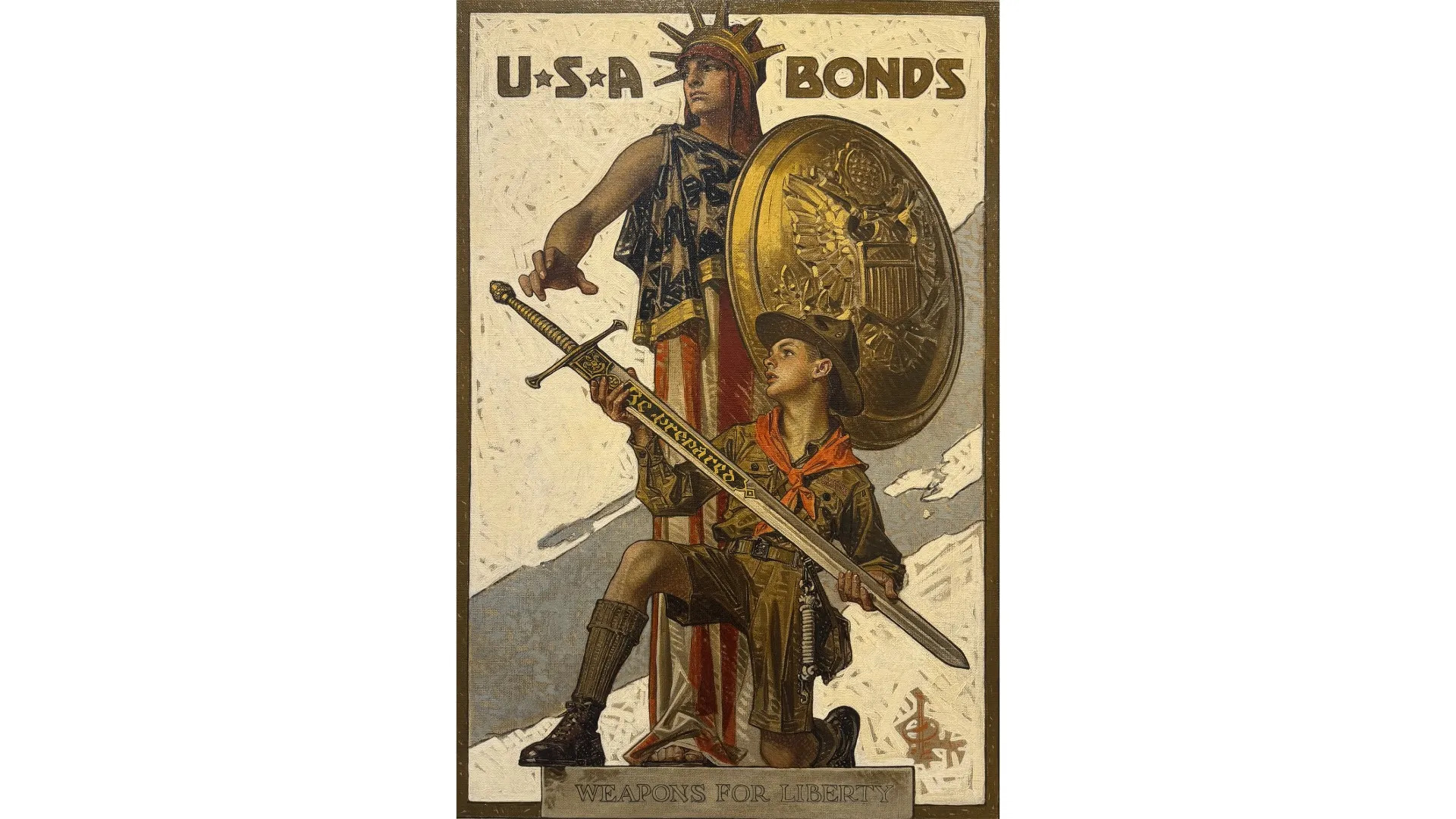The Boy Scouts of America (BSA), an institution synonymous with the virtues of leadership, service, and community, is embroiled in a financial and legal crisis that has placed some of the most iconic pieces of American art in jeopardy. Among the assets slated for liquidation to satisfy the demands of justice are the renowned paintings of Norman Rockwell, whose work has long been emblematic of American values. These artworks are not merely valuable in a monetary sense but are also significant cultural treasures, reflecting the ethos of a bygone era. This article delves into the complexities surrounding the auction of these paintings, the implications for survivors of sexual abuse, and the broader impact on American culture.
The Historical Significance of Norman Rockwell’s Paintings
Norman Rockwell, an artist whose name is synonymous with Americana, created images that captured the spirit of the nation during the 20th century. His work for the Boy Scouts of America, spanning from 1925 to 1976, is particularly revered. Rockwell’s paintings for the BSA depicted idealized visions of American youth, emphasizing values such as bravery, kindness, and community service. These works became an indelible part of the Boy Scouts’ identity, helping to promote and sustain the organization’s mission across generations.
The Artistic Value of Rockwell’s BSA Collection
Rockwell’s paintings for the Boy Scouts are not just nostalgic representations of American life; they are masterful works of art that exhibit his skill in composition, narrative, and character depiction. Each piece tells a story that resonates with viewers, evoking a sense of pride and belonging. The technical excellence of Rockwell’s work, combined with the emotional depth he infused into each scene, ensures that these paintings hold a unique place in American art history.
The Boy Scouts of America: A Troubled Institution
The Boy Scouts of America, founded in 1910, has been a pillar of American society, fostering the development of millions of young men through its programs. However, in recent years, the organization has been rocked by a series of sexual abuse scandals that have resulted in thousands of claims from survivors. The scope and scale of these allegations have led to a significant financial burden on the organization, culminating in the BSA filing for Chapter 11 bankruptcy in 2020.
Legal and Financial Repercussions
The bankruptcy proceedings have forced the BSA to liquidate assets to create a compensation fund for survivors. Among the most high-profile assets are the Norman Rockwell paintings, which were originally donated to the organization. The decision to auction these paintings has sparked considerable debate, as it involves weighing the cultural significance of the artworks against the moral and legal obligation to compensate survivors.
The Auction: A Controversial Solution
The auction of the Norman Rockwell paintings is seen by some as a necessary step in resolving the financial crisis facing the Boy Scouts. However, it is also viewed by many as a tragic consequence of the organization’s failure to protect its members. The sale of these paintings raises critical questions about the preservation of cultural heritage and the responsibilities of institutions to uphold ethical standards.
Potential Buyers and Market Interest
The auction is expected to attract significant interest from collectors, museums, and private individuals. Norman Rockwell’s work has always commanded high prices in the art market, and these paintings, given their provenance and historical importance, are likely to fetch substantial sums. The proceeds from the auction will contribute to the survivors’ compensation fund, but the loss of these artworks from public view is a poignant reminder of the consequences of institutional failures.
The Impact on Survivors and the Public
For the survivors of sexual abuse, the auction represents a complex mixture of justice and loss. While the sale of the paintings will provide financial compensation, it also symbolizes the end of an era for the Boy Scouts of America. The cultural and emotional value of these paintings cannot be easily quantified, and their removal from the organization’s holdings marks a significant shift in its identity.
Ethical Considerations and Cultural Heritage
The ethical implications of the auction extend beyond the immediate financial needs of the BSA. The decision to sell such important cultural artifacts has been met with criticism from various quarters, including art historians, cultural institutions, and members of the public. The debate centers on the balance between fulfilling legal obligations to survivors and preserving the artistic legacy of Norman Rockwell for future generations.
A Legacy in Peril
The auction of Norman Rockwell’s Boy Scout paintings is a tragic reflection of the challenges facing the Boy Scouts of America. As these iconic works of art are dispersed into private collections, the cultural and historical legacy they represent becomes fragmented. While the sale may provide a form of restitution for survivors, it also marks the end of an era in which Rockwell’s art served as a visual embodiment of the Boy Scouts’ ideals. The broader implications of this auction will be felt across the cultural landscape, raising questions about how society values and preserves its artistic heritage.
The situation surrounding the auction of Norman Rockwell’s paintings is a compelling case study in the intersection of law, ethics, and cultural preservation. As the Boy Scouts of America navigates its financial and moral obligations, the fate of these iconic artworks serves as a somber reminder of the enduring impact of its failures.
You can make a difference in helping our staff thrive by making a small donation!
Hope to see you with us!


